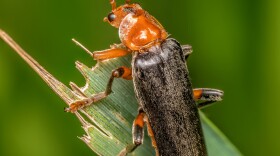With climate change increasing the frequency and strength of the hurricanes we experience, the chances of a windblown insect species relocating and becoming invasive is a real and growing possibility.
If you’re like us, you enjoy learning new words. And thanks to an article written by Dana Kobilinski, Associate Editor at The Wildlife Society, we recently learned a good one.
Your new word for the day is …“bioscattter.”
No, bioscatter is not a gathering of confused biologists.
And no, it’s not what happens when you turn on the lights in a cockroach infested apartment.
It’s a phenomenon that’s been documented for well over a century, but is becoming more important with our changing climate.
To understand bioscatter, we first need to understand the structure of a hurricane. In the middle of these powerful storms is the eye. Unlike the strong winds and heavy precipitation found throughout the rest of the cyclone, there’s little to no rain and calm winds within the storm’s eye.
So within the chaos of a hurricane you can find surprising tranquility in the center of the storm.
As it turns out, wind and rain are not the only things hurricanes bring to the land masses that are in their path. Incredibly, they carry bioscatter – insects, birds, and other animals that get caught in these storms and are turbulently transported to distant locations, surviving the gale in the calm of the storm’s eye.
Research has shown that the stronger the storm, and the more well-defined the storm’s eye, the more bioscatter it carries with it.
And while this is a natural occurrence, transporting any insect to a region where they are not native can have ecological consequences.





